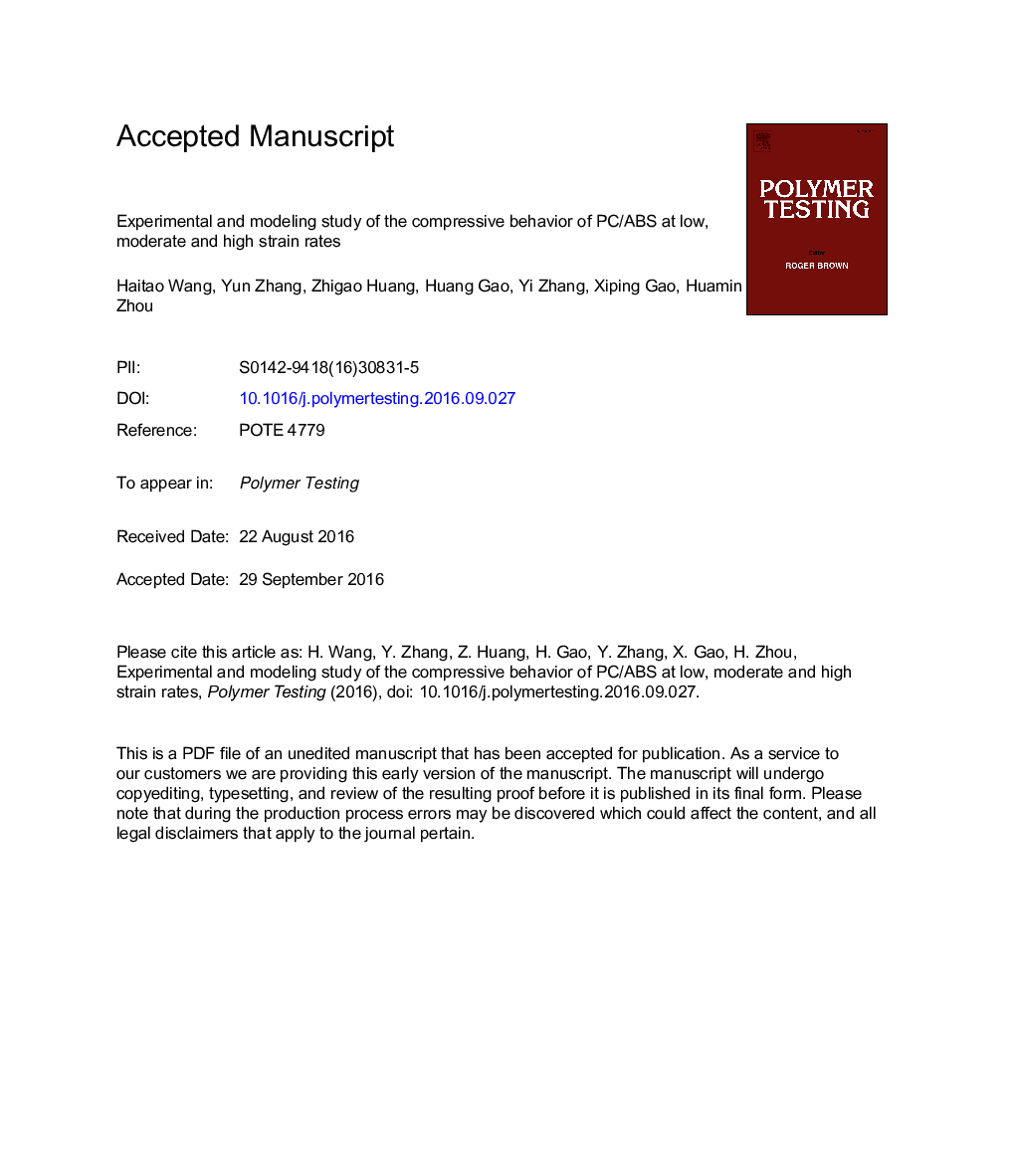| Article ID | Journal | Published Year | Pages | File Type |
|---|---|---|---|---|
| 5205586 | Polymer Testing | 2016 | 39 Pages |
Abstract
The objective of this paper is to perform a combined experimental and analytical investigation of the compressive mechanical behavior of a polycarbonate (PC) and acrylonitrile-butadiene-styrene (ABS) blend (with a ratio of PC to ABS being 60:40) at strain rates ranging from 10â4 to 5000 sâ1 at room temperature. A Shimadzu universal testing machine, a Gleeble 3500 thermo-mechanical simulator and a split Hopkinson pressure bar were utilized to obtain stress-strain responses of PC/ABS at low, moderate and high strain rates, respectively. Dynamic mechanical analysis (DMA) was used to capture the glass (α) transition and the second (β) transition at various strain rates. The compressive deformation mechanism of PC/ABS from low to high strain rates can be explained with the DMA results. To predict the rate-dependent deformation of PC/ABS, an adiabatic model proposed in our previous work was employed. The model allows for the contributions of the α and β transitions to the mechanical performance, and is validated as being able to accurately predict the mechanical behavior of PC/ABS at low, moderate and high strain rates, including initial elasticity, yield, strain softening and strain hardening.
Related Topics
Physical Sciences and Engineering
Chemistry
Organic Chemistry
Authors
Haitao Wang, Yun Zhang, Zhigao Huang, Huang Gao, Yi Zhang, Xiping Gao, Huamin Zhou,
